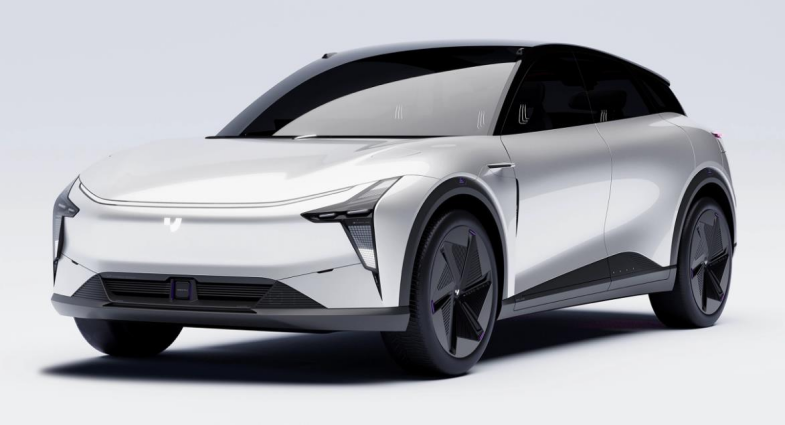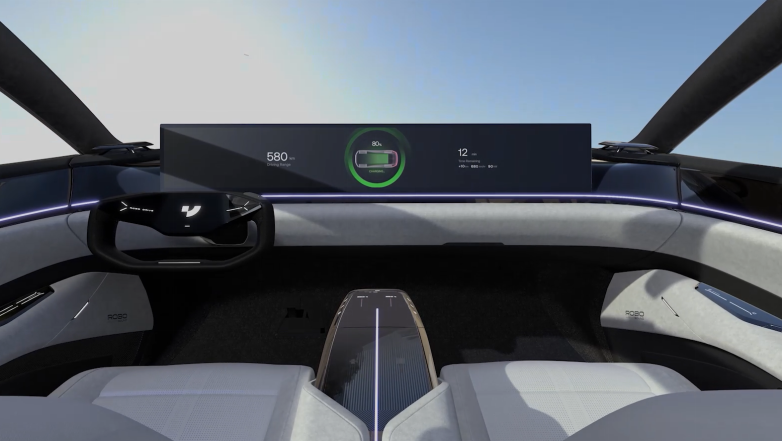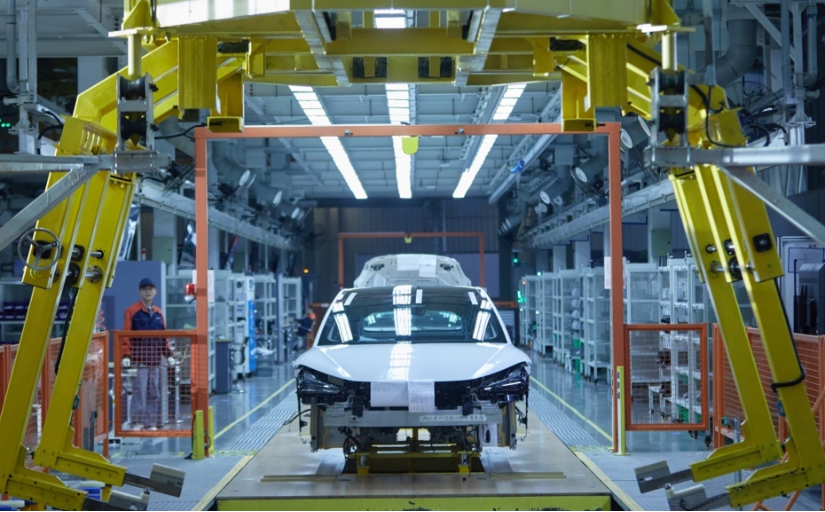ROBO-01 Verification Prototype unveiled at Jidu Auto’s Shanghai conference
Author: Ruichen Zhang
Editor: Xianzhi Wu
On October 24th, Jidu Auto unveiled its first car robot, the ROBO-01 Verification Prototype, which is scheduled to be delivered in 2023. In addition, the company revealed its second mass-produced car, which is expected to debut at the Guangzhou Auto Show in November.

The live event on the day of the conference was themed “Zero Machine Awakening” and Jidu CEO Yiping Xia responded to a variety of hot-button issues pertaining to the progress of car robot development, the intelligence capabilities, and safety quality of the ROBO-01, and how it’s going to function as a robot car. Xia said that the ROBO-01 will be fully voice-controlled, and will “understand” the user’s habits and movements, instead of requiring manual interactions. Based on the feedback from the media and users, Jidu also showcased the production process of the ROBO-01 verification prototype and the high-level intelligent driving road testing stage in multiple city environments.
ROBO-01 is built on the Geely SEA architecture, developed using the SIMUCar process, and empowered by the atomic-level ability of Apollo’s advanced autonomous driving, realizing high-level intelligent driving that includes unsafe left turns, free on and off the ramp, traffic light recognition, lateral intrusion detection, obstacle avoidance, and big vehicle avoidance. As technology continues to develop and mature, Jidu aims to provide a high-quality, smooth-driving robot car experience that encompasses core cities worldwide.During the development and trial production process, many manufacturing processes and production processes were verified, optimized, and iterated with the help of the flexible production line and newly introduced equipment of Geely’s trial production center. For example, the design of the 2.15-square-meter front engine compartment is one of the largest sizes on the market, which gives it a natural advantage compared to other domestic new energy vehicles and can help avoid detours in the production process.
Front End
Equipped with an interactive AI pixel lamp with a light language mode, although it does not have the same size as the high-end HiPhi-X, the high-precision AI voice interaction system achieves natural communication among “people-cars-environments”. The continuous LED daytime running lights and the car-penetrating taillights echo each other, and the active air intake grille combined with the closed and low-profile design of the front face. The two hidden laser radars originally designed above the engine hood have been adjusted to be placed inside the lamp group, similar to the design of the XPENG G9.
Side Profile
ROBO-01 uses a gull-wing door design. From the official pictures, it can be seen that the B-pillar has been removed, but the subsequent mass-produced cars may continue the design of B-pillar and cancel the gull-wing door. Removing door handles and other complex designs better exemplifies the concept of a car robot. It is equipped with 22-inch blade-shaped wheels (available in three styles).
Rear Exterior
The trapezoidal design with a narrow top and wide bottom creates a feeling of widebody kit, and the rear is also equipped with an interactive AI pixel taillight, a through-type taillight, and a vertical high-mounted brake light combination design. At the same time, the vehicle also comes with a retractable electric tail wing.

Interior
The interior is equipped with a Dalian screen design, and the center console has a floating feeling, which is relatively simple and concise. Equipped with a collapsible U-shaped steering wheel, there are two satellite speakers on both sides of the screen that can be raised and lowered, and zero-gravity seats are used.
Infotainment
ROBO-01 is equipped with China’s first Snapdragon fourth-generation digital cockpit chip 8295 (30TOPS AI computing power), and the whole vehicle is equipped with 31 external sensors, including 2 lidars, 5 millimeter-wave radars, 12 ultrasonic radars, and 12 cameras, which is beneficial for autonomous driving.
Speaking of autonomous driving, we have to mention the autonomous driving assistance function introduced by Jidu Auto at the Shanghai Auto Show.

Jidu Auto’s head of autonomous driving, Wang Weibao, invited Jidu CEO Xia Yiping to experience the latest version of ROBO-01’s autonomous driving. ROBO-01’s autonomous driving includes unprotected left and right turns, automatic lane changing, on and off-ramp driving, high-speed driving, recognizing cut-ins, red light and green light straight driving, avoiding pedestrians and vehicles, and decelerating when encountering other cars.According to user feedback, the follow-up function of ROBO-01 gives the feeling of a “professional driver” driving for you. During meeting situations, ROBO-01 can decelerate in time without causing abrupt stops. During ramp travel, CEO of Jidu, Xia Yiping, joked that “it’s faster than my usual Tesla.”
During high-speed travel, ROBO-01 can maintain the same speed as other vehicles, but if the speed of the vehicle in front is too slow, ROBO-01 does not change lanes in time. It should be noted that during travel, ROBO-01 relies on recognising the speed limit (actual delivered cars can travel based on the owner’s set speed threshold).
But let’s face it, ROBO-01 responds quite quickly when passing through traffic lights. When a vehicle crosses in front, ROBO-01 also recognises deceleration in time. When it detects that it can pass through the traffic light unobstructed, it can start directly and quickly reach an appropriate speed without causing unnecessary trouble for the following vehicles.
With the official launch of the ROBO-01 verification prototype, many people have learned about the car robot start-up company initiated by Baidu and strategically invested by Geely. When it comes to the Robotaxi field, Jidu CEO Xia Yiping strives to be the industry leader. Committed to creating high-end autonomous driving and human-computer interaction quality products, realizing “car robotization,” reducing driving operations, and getting closer to life – shaping highly intelligent mass-produced cars.
This article is a translation by ChatGPT of a Chinese report from 42HOW. If you have any questions about it, please email bd@42how.com.
